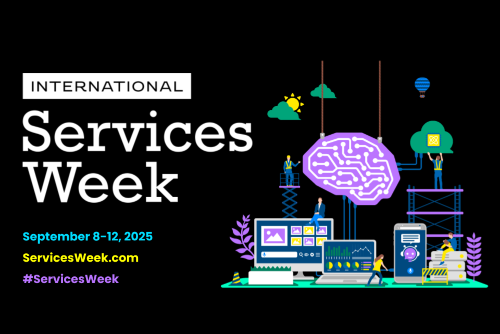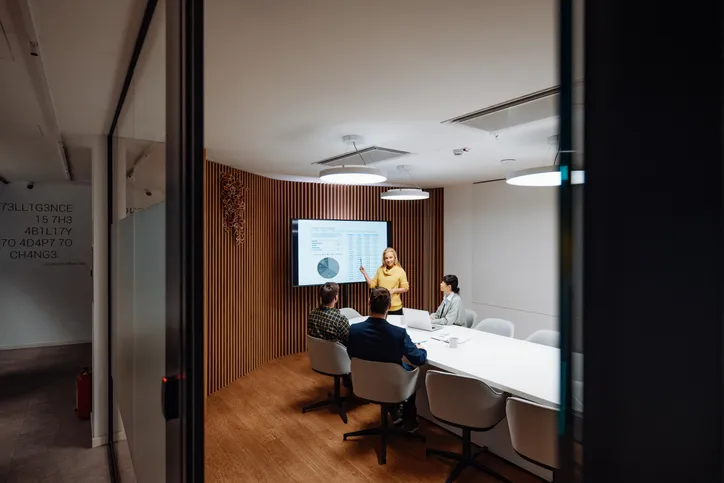Mastering demand-side resourcing for services excellence

The transition to demand-side resourcing reflects a major shift in how services businesses manage and optimize their workforce.
But, you may be wondering… “What exactly IS “demand-side resourcing?”
Demand-side resourcing is a strategic approach to capacity planning, resource allocation, and skills management, with the customer’s requirements and pipeline demand serving as the primary focus.
Contrast this with supply-side resourcing, which is centered around the availability of employees’ skills and hours. Demand-side resourcing prioritizes optimizing customer outcomes by ensuring that projects are initiated more swiftly, resources are utilized more efficiently, and customer trust is heightened.
Certinia PS Cloud, comprising tools like Services Estimator, advanced resource management, and skills optimization, facilitates a comprehensive demand-side resourcing approach. This interconnected system spans the entire services delivery journey, enhancing accuracy in services estimates, improving resource booking and project alignment, and fostering skills development and project satisfaction among employees.
We dove into this topic in our recent webinar, “DELIVER IT! Run A Smarter Services Business with Demand-Side Resourcing“. I joined Casey Ryan from 3Cloud and Jen Carey and Jordan Steward from Spaulding Ridge as we delved into the core of demand-side resourcing, highlighting its superiority over traditional methods.
In the webinar Casey Ryan shared 3Cloud’s journey, revealing how the shift to demand-side resourcing brought visibility and flexibility to the business. His biggest emphasis was the impact to visibility in project and resource management, particularly in the context of forecasting and planning.
For example, with a demand-side resourcing approach today, upon securing an opportunity 3Cloud breaks down the work according to different roles and their respective phases within the project. This detailed breakdown allows for the application of confidence-weighted forecasting, enabling the prediction of revenue timelines, hiring requirements, and the impact on idle resources (“the bench”). Even more, this visibility facilitates the identification of shifts in services demand, highlighting areas where retraining may be necessary due to changes in market trends or client needs— this is particularly relevant in the dynamic environment of consulting firms.
“There is a great ability to adjust the rhythm of the business and how we looked at the data because of the consistency of the data we were getting. So we could move away from having to call 50 person meetings to understand a particular project, to being able to have very set check-ins and meetings where people are able to review the data like their morning paper, come to the meeting prepared with options or names or further questions. It deescalated the emotional tenor of the larger groups that are working on our resource management, our solution architects, our practices, we’re able to move on to other problems that they might have because of that.”
– Casey Ryan, 3Cloud
Then, Jen Carey highlighted three common challenges across various client implementations:
- The challenge of identifying hiring needs early in the sales cycle, which includes understanding the specific skills, certifications, and industry expertise required for different roles.
- The problem of businesses managing an overwhelming number of skills and certifications, leading to poor employee engagement and data quality.
- The existence of silos between different departments such as pre-sales, sales, and project management, which complicates communication and data sharing.
Jen also touched upon the complications that arise when clients, like 3Cloud, use software in ways that deviate from its intended purpose, necessitating adjustments to optimize the software’s benefits.
Spaulding Ridge’s role involved addressing these challenges by improving processes and aligning the use of software with its original design intent, to ensure and enhance efficiency and outcomes.
Our panelists unanimously agreed on the positive ripple effects of demand-side resourcing on employee and customer satisfaction: “Staffing a project effectively… is more than just determining who’s available,” said Spaulding Ridge’s Jordan Steward, highlighting the importance of aligning staff assignments with individual growth plans and skill sets.
As we reflect on the insights shared during the webinar, it’s clear that demand-side resourcing is not just a methodology but a catalyst for change. It empowers businesses to harness the full potential of their workforce, aligning resources with customer demand to drive satisfaction and success.
For those intrigued by the possibilities of demand-side resourcing and eager to explore how it can transform your services delivery, we invite you to access the on-demand recording of the webinar. Learn how Certinia can revolutionize your approach to resource management, fostering a more agile, efficient, and customer-centric operation!
Recent Articles
Maximize your Salesforce investment with Certinia






